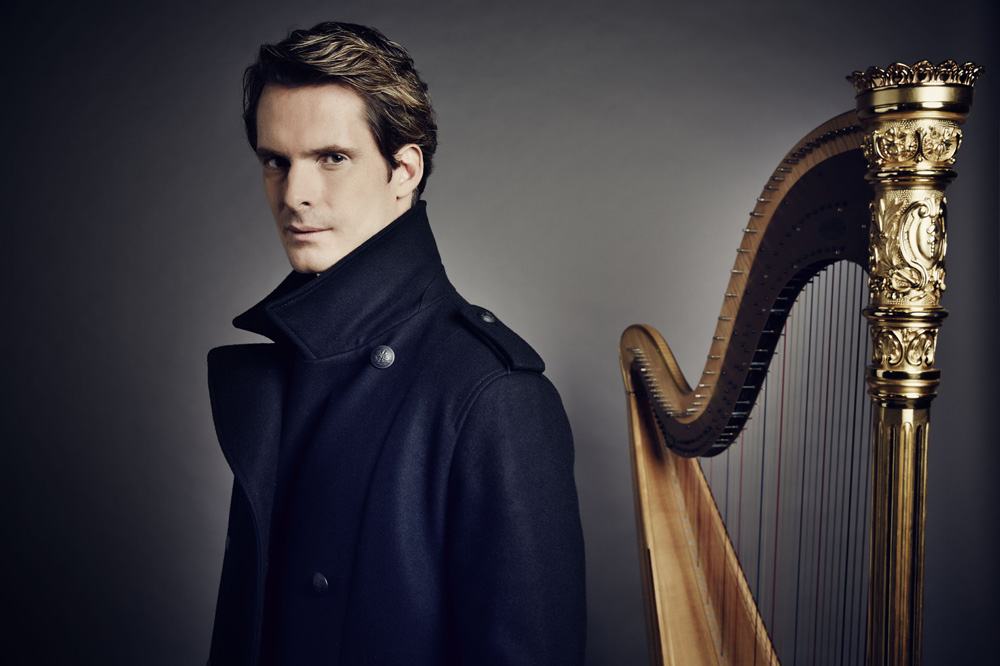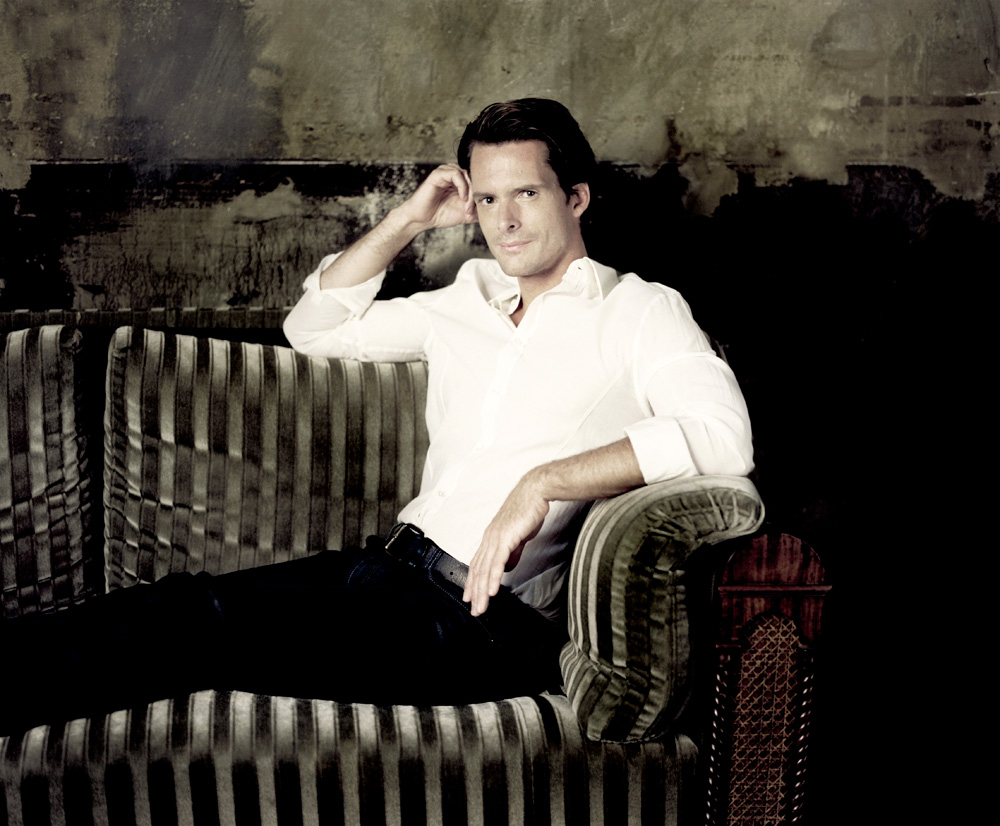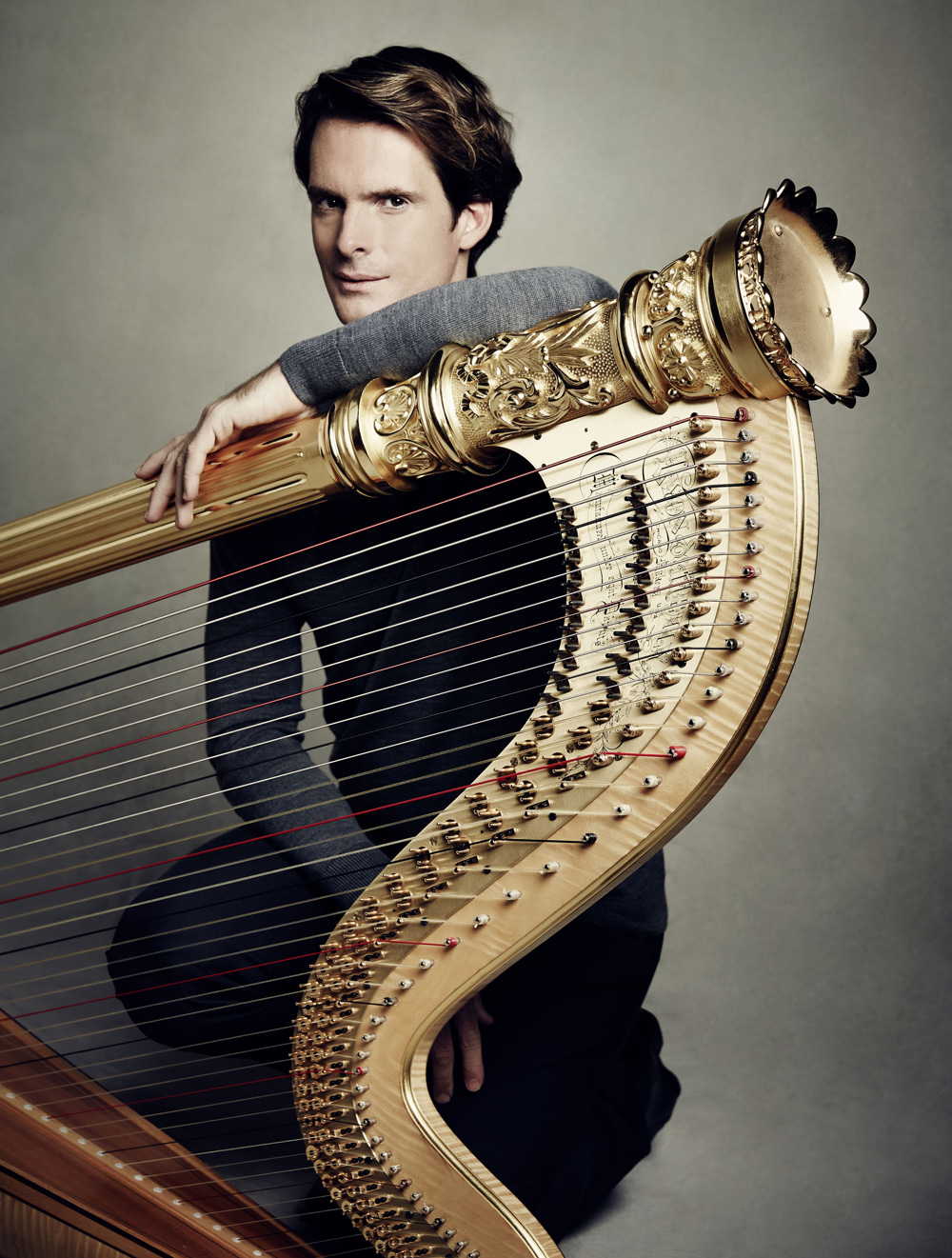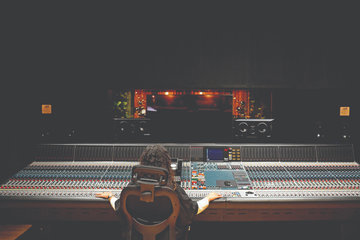
Photo by Gregor Hohenberg for Sony Classical
Xavier de Maistre is one of those unique solo artists whose flawless technique has earned him international fame and a reputation as a dazzling performer. And his striking good looks certainly add to his appeal. Born in Toulon, France, he began to play the majestic harp at the age of nine. “I started my music lessons at the music school in my home town. In France, it is common that children start their musical education by visiting a class in music theory, and this was given by a young female teacher who also gave harp lessons. I immediately fell ‘in love’ with her and decided I wanted to start learning the harp,” he admits. He later completed his studies with Jacqueline Borot and Catherine Michel in Paris.
However, he does not stem from a musical family, and his parents actually wanted him to study something conservative, so he studied Political Sciences at the renowned Ecole des Sciences Politiques in Paris and at the London School of Economics. He has come a long way since then. He continued to play the harp, and in 1998 he was awarded first prize at the US International Harp Competition in Bloomington. Additionally, at 24 years of age he became a member of the Vienna Philharmonic.

Photo by Felix Broede for Sony Classical
The Rhythms Of The World
Since that illustrious award, he has performed with the Orchestre de Paris, the new Philharmonic Orchestra in Paris, as a guest at the Danish National Symphony Orchestra and the Tampere Philharmonic. He has also played with the Orquesta Nacional de España, the Sinfonieorchestern in Basel, Bern and St. Gallen, as well as the Düsseldorfer Symphonikern and the Deutschen Kammerphilharmonie Bremen.
Since 2001, he is also a professor at the Musikhochschule Hamburg and he gives master classes at the Juilliard School New York, Toho University Tokyo and the Trinity College London. He has worked with renowned conductors such as Philippe Jordan, Riccardo Muti, André Previn, and Kazuki Yamada. “In recital, I like to present the width of the repertoire for harp solo, from baroque to 20th century, so the audience can discover the various possibilities and sounds of the harp,” he says.
Despite many years of touring he never tires of the experience. In 2015 alone, he performed in 20 different countries. “It’s wonderful to be connected with my audience. The audience wants to be moved and to share special moments, and when I play I can feel the energy, which comes from the public, very strongly. It’s fantastic to perform the wide spectrum of colours of sound which the harp can produce, but, I also love these moments, when a sold out big hall becomes absolutely silent to hear a very gentle Pianissimo,” he says.

Photo by Gregor Hohenberg for Sony Classical
With such a busy schedule he has little time for other activities, but as he needs to stay fit and keep in shape for the physical challenges of playing the harp. He works out regularly and enjoys sports, especially windsurfing. He also reads at least two newspapers a day to stay up-to-date with world affairs and devotes time to his family.
“I am happy to have a career as successful as it is now and have by now already achieved much more than I could have imagined in my dreams when I left the position as a solo harpist at the Vienna Philharmonic Orchestra,” he says. “Therefore, I am happy to follow invitations from all over the world and to present the harp as a solo instrument to a growing audience.” His message to young aspiring musicians is short and sweet: “Work hard to realise your dreams, even against all resistance.”

















